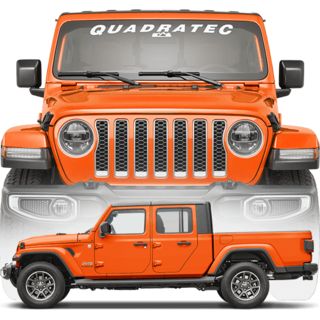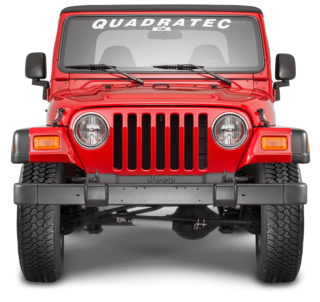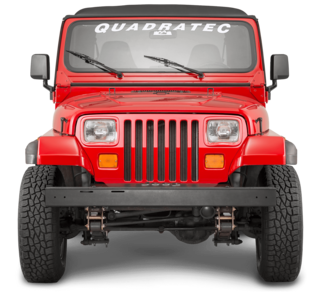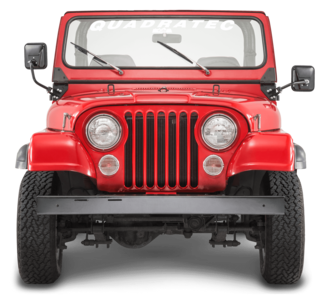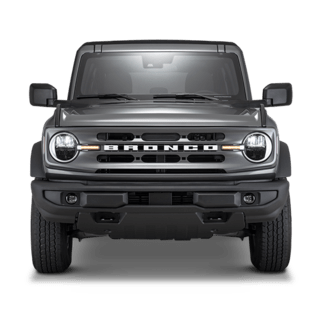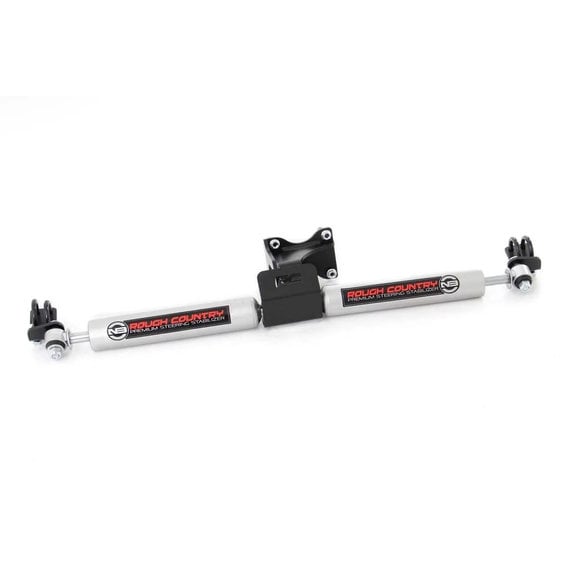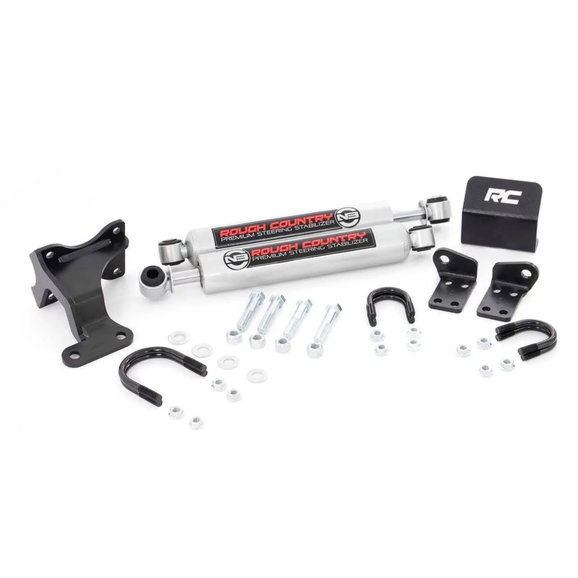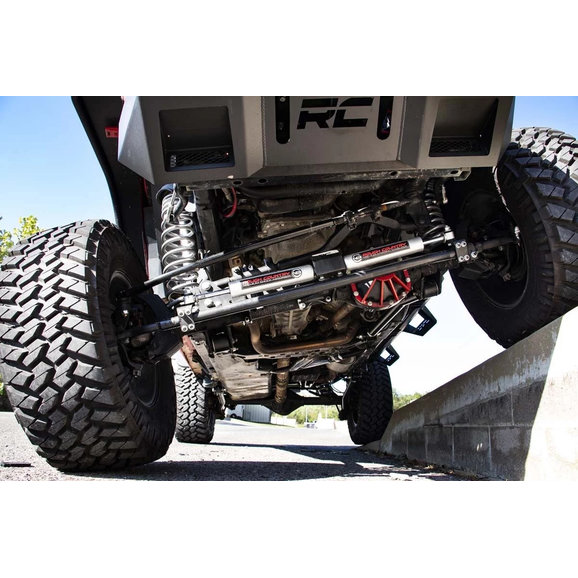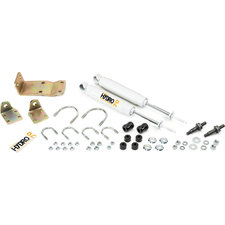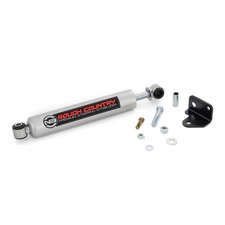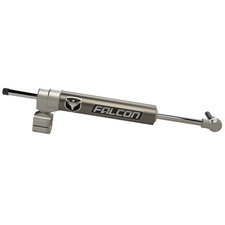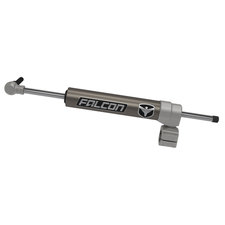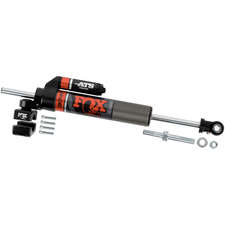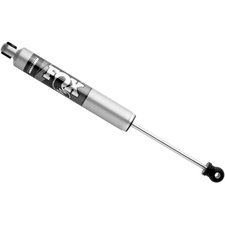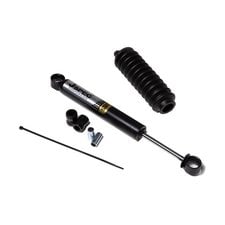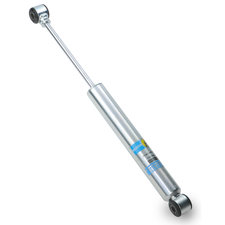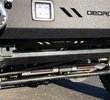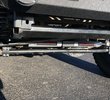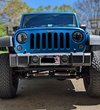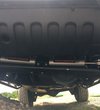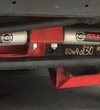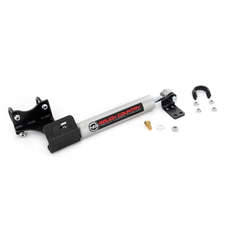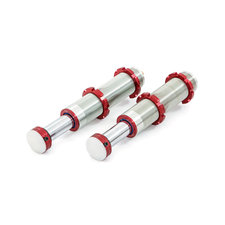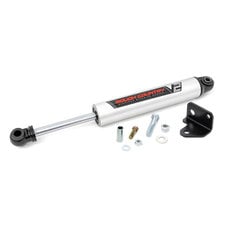Give your Jeep Wrangler JK a smooth ride with the Rough Country N3 Dual Steering Stabilizer. This 100% bolt-on stabilizer is designed to improve handling and ride comfort by reducing vibration and harshness. When running larger wheels and tires, an upgraded steering stabilizer is extremely beneficial. Not only will the N3 steering stabilizer reduce “bump steer”, but it will also extend the life of your tires, steering components, and ball joints. By using a dual stabilizer design, the force of the nitrogen-charged shocks is equalized so that your Jeep's steering is not pushed in either direction. Rough Country premium N3 shocks are nitrogen-charged and feature a twin-tube design with 10-stage variable valving.
Installation Note: A Minimum of 2” of Lift is Required for Installation
N3 Premium Shock: Rough Country’s N3 shocks provide smooth performance with nitrogen-charged 10-stage variable valving. They are designed to provide a comfortable on-road ride, while improving off-road damping.
Heavy-Duty Design: The Rough Country N3 Steering Stabilizer features a rugged 54mm shock body, and an 18mm chrome hardened piston rod.
Dual Stabilizer: By adding an additional stabilizer in the opposing direction, dual steering stabilizers provide a smooth ride without pushing the steering linkage.
Bolt-On Installation: For ease of install, the Rough Country N3 Steering Stabilizer mounts to your Jeep without cutting, drilling, or other modification.
Reduces Wear & Tear: By mitigating harshness and vibration, the Rough Country N3 Steering Stabilizer will extend the life of your tires, ball joints, and tie rod ends.
- N3 Steering Stabilizer Pair
- Tie Rod Bracket Pair
- Center Axle Bracket
- RC Center Cover
- Tie Rod U-Bolts (Qty 4)
- Axle U-Bolt Pair
- Installation Hardware
- Features: Nitrogen Charged
- Location: Steering Stabilizer
- Shipping Weight: 18lb
- Shipping Dimensions: 26in x 6in x 6in (L x W x H)
Jeep Wrangler 2-Door (JK)
- 2018 Jeep Wrangler 2-Door (JK)
- 2017 Jeep Wrangler 2-Door (JK)
- 2016 Jeep Wrangler 2-Door (JK)
- 2015 Jeep Wrangler 2-Door (JK)
- 2014 Jeep Wrangler 2-Door (JK)
- 2013 Jeep Wrangler 2-Door (JK)
- 2012 Jeep Wrangler 2-Door (JK)
- 2011 Jeep Wrangler 2-Door (JK)
- 2010 Jeep Wrangler 2-Door (JK)
- 2009 Jeep Wrangler 2-Door (JK)
- 2008 Jeep Wrangler 2-Door (JK)
- 2007 Jeep Wrangler 2-Door (JK)
Jeep Wrangler Unlimited 4-Door (JK)
- 2018 Jeep Wrangler Unlimited 4-Door (JK)
- 2017 Jeep Wrangler Unlimited 4-Door (JK)
- 2016 Jeep Wrangler Unlimited 4-Door (JK)
- 2015 Jeep Wrangler Unlimited 4-Door (JK)
- 2014 Jeep Wrangler Unlimited 4-Door (JK)
- 2013 Jeep Wrangler Unlimited 4-Door (JK)
- 2012 Jeep Wrangler Unlimited 4-Door (JK)
- 2011 Jeep Wrangler Unlimited 4-Door (JK)
- 2010 Jeep Wrangler Unlimited 4-Door (JK)
- 2009 Jeep Wrangler Unlimited 4-Door (JK)
- 2008 Jeep Wrangler Unlimited 4-Door (JK)
- 2007 Jeep Wrangler Unlimited 4-Door (JK)
- Shared By Others
- Share a Photo
- Ask a Question
- Write a Review
Rough Country N3 Dual Steering Stabilizer Reviews
Greatly reduced all wobble and really smoother out the steering. Took a couple adjustments over the first week or so to find the sweet spot but overall easy to install
Installation was tricky, but once you get it, you're done. You will wish you had three hands. Took 2 hours but would take 30 minutes if done again. Steering is much tighter. Almost too tight sometimes? It will take an additional amount of effort to steer standing still on a cold morning; that's when I notice it the most, otherwise it's fine. I wanted it a little stiffer, and I got it.
Pricing
Questions


When you lift your 2015 Jeep JK, several things can contribute to a feeling of loose or imprecise steering. It's not usually a matter of simply "tightening" something like a bolt, but rather correcting the geometry of the steering and suspension components that are altered by the lift. Here's a breakdown of the common issues and how to address them:
1. Steering Wheel Centering:
The Problem: After a lift, your steering wheel is often no longer centered when the Jeep is driving straight. This is because the track bar, which locates the axle laterally, pulls the axle to one side as the suspension is lifted.
The Solution: You need to adjust the length of the track bar.
Stock Track Bar with a Bracket: Some budget lift kits include a track bar relocation bracket. Ensure this bracket is properly installed. If the steering wheel is still off, you might need an adjustable track bar (see below).
Adjustable Track Bar: If you have an adjustable track bar (highly recommended for lifts over 2 inches), you'll need to loosen the jam nuts and rotate the threaded body of the track bar until the axle is properly centered under the Jeep. You can measure from the outside of the tires to the fender flares on both sides to ensure they are equal. Once centered, tighten the jam nuts to the manufacturer's specified torque.
Drag Link Adjustment: Once the axle is centered with the track bar, you'll then adjust the drag link to center the steering wheel. Loosen the two pinch bolts on the drag link adjuster sleeve and rotate the sleeve until the steering wheel is straight. Then, tighten the pinch bolts to the specified torque.
2. Caster Angle:
The Problem: Lifting a Jeep changes the caster angle, which is the angle of the steering axis relative to the vertical. Insufficient positive caster can lead to "floaty" or wandering steering and a lack of return to center.
The Solution: Caster is typically corrected using:
Cam Bolts: Some lower control arms have cam bolts that allow for caster adjustment.
Adjustable Control Arms: Aftermarket adjustable control arms (especially lower front) allow you to dial in the correct caster angle.
Caster Correction Brackets: These brackets reposition the lower control arm mounts to restore proper caster.
3. Toe Alignment:
The Problem: While lifting doesn't directly change toe, the altered suspension geometry can sometimes affect it. Incorrect toe-in or toe-out can cause wandering steering and premature tire wear.
The Solution: A proper wheel alignment is crucial after lifting a Jeep. A qualified alignment shop will set the correct toe, caster (if adjustable components are installed), and camber.
4. Steering Stabilizer:
The Problem: A weak or inadequate steering stabilizer won't effectively dampen vibrations and can contribute to a loose feeling, especially with larger tires.
The Solution: Consider upgrading to a heavy-duty steering stabilizer, especially if you've installed larger tires. Some people even run dual steering stabilizer setups for more aggressive off-roading.
5. Track Bar Bushings and Ball Joints:
The Problem: While not directly caused by the lift, worn track bar bushings or ball joints can exacerbate any loose steering issues after lifting. The increased leverage from larger tires can highlight existing wear.
The Solution: Inspect these components for any play or damage and replace them if necessary.
Steps to Tighten Steering After a Lift:
Center the Axle: Adjust the track bar until the front axle is properly centered under the Jeep.
Center the Steering Wheel: Adjust the drag link so the steering wheel is straight when driving straight.
Get a Proper Wheel Alignment: Take your Jeep to a reputable alignment shop to have the toe, caster, and camber adjusted. Ensure they are familiar with lifted vehicles.
Inspect Steering Components: Check the track bar bushings, ball joints, tie rod ends, and drag link ends for any wear or play. Replace if needed.
Consider a Steering Stabilizer Upgrade: If the steering still feels loose, especially with larger tires, consider upgrading your steering stabilizer.


